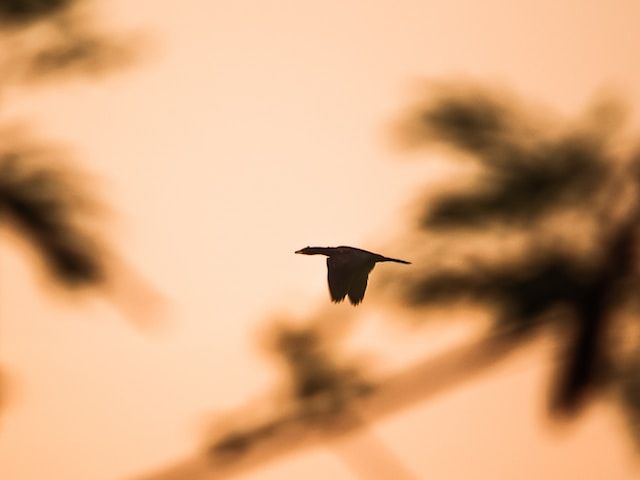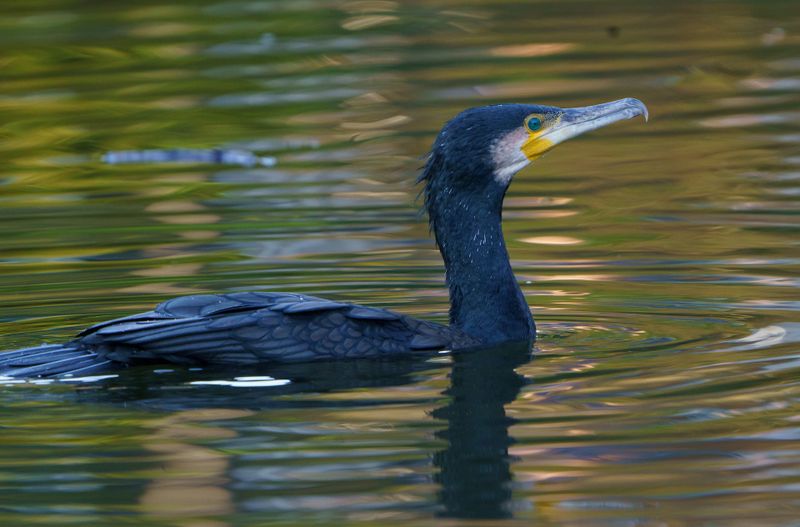The Venice Lagoon, with its timeless beauty, was the scene of an enchanting spectacle on December 30, 2024.
On that unforgettable day, hundreds of cormorants plied the skies and danced above the waters of St. Mark's Basin, providing a unique and extraordinary spectacle.
The flight of the Cormorants in the Venice Lagoon

The black wings of the cormorants brushed against the blue sky, creating an enveloping choreography that caught the eyes of the lucky spectators present at the time. The skill of these birds in flight was on display as they glided gracefully and elegantly, painting sinuous lines in the air.
The Lagoon as stage:
The San Marco Basin played the role of a majestic stage, providing a unique backdrop for this natural spectacle. The calm waters of the lagoon reflected the sky and birds in flight, creating a magical and surreal atmosphere.
The harmony of nature:
In this extraordinary moment, nature demonstrated its ability to create spectacles beyond all human imagination. The synchrony of the cormorants in flight evoked a sense of harmony and beauty, conveying a message of balance in nature.
The importance of conservation:
This fascinating spectacle not only thrilled spectators but also underscored the importance of environmental conservation.
Cormorants, symbols of freedom and wild beauty, are undoubtedly linked to the prosperity of the lagoon and its ecosystem.
The flight of the Cormorants in the Venice Lagoon: what kind of bird?
The cormorant is a fascinating marine bird known for its distinctive abilities in flight and underwater diving. Belonging to the Phalacrocoracidae family, the cormorant is distributed worldwide and adapts to a variety of aquatic environments, from freshwater to coastal seas.
Physical appearance:
The cormorant has a sleek body, a long neck, and a pointed beak. Its coloring varies depending on the species, but often includes black or dark brown feathers.
The legs are webbed, ideal for swimming, and the wings are strong and suitable for prolonged flight. One of the most notable features of the cormorant is its ability to dive underwater in search of food.
Fishing skills:
The cormorant is an expert fisherman. While many other water bird species limit themselves to catching food from the water's surface, the cormorant actively dives to capture fish and other aquatic prey.
Its wings are partially submerged during swimming, and the bird uses its webbed feet to move agilely in the water. Once the prey is located, the cormorant dives rapidly, using its sharp beak to catch the fish.
Environmental adaptability:
Cormorants have adapted to a wide range of habitats, including lakes, rivers, estuaries, and coastal areas. Some species can even venture inland, colonizing lakes and rivers far from the sea.
Their versatility in adapting to different environments is a key element of their success as a species.
Social behavior:
Cormorants are often seen in colonies during the breeding season. They build their nests on cliffs, trees, or other elevated surfaces, forming noisy and active communities.
Social behavior may vary among species, but many of them exhibit remarkable social cohesion during nesting and hunting.
Interaction with Humans:
While cormorants are essential for maintaining ecological balance in aquatic ecosystems, they can sometimes come into conflict with human interests.
In some regions, birds may interfere with commercial fishing activities, leading to management measures to limit their population.
The flight of the Cormorants in the Venice Lagoon: Conclusion
The cormorant is an extraordinary bird, perfectly adapted to aquatic life. Its ability for underwater hunting, environmental versatility, and complex social behavior make it a captivating subject for birdwatchers and biology scholars alike.
Harmonious coexistence between cormorants and humans requires a delicate balance that takes into account the needs of both species in the shared environment.
The flight of cormorants in the Venice lagoon on December 30, 2024 will remain etched in the memory of those lucky enough to witness this natural wonder.
This event reminds us to appreciate and preserve the beauty of nature around us so that future generations can also enjoy such extraordinary spectacles as this one.

